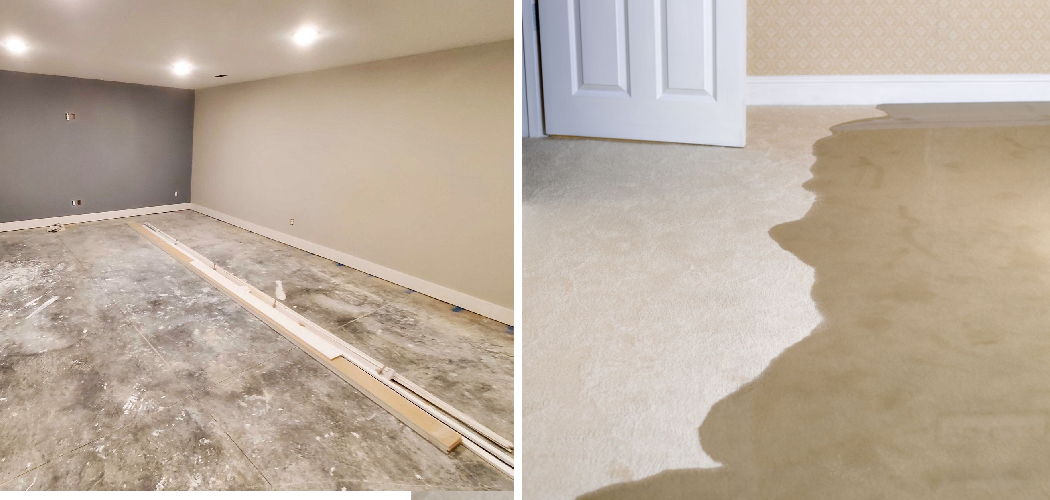Flooding in the basement can happen for various reasons, like heavy rainfall or a burst pipe. Unfortunately, it can cause serious damage to your basement concrete floor if not tackled immediately. The excess water can weaken the concrete, loosen tiles, and cause molds and mildew to grow. Moreover, it can cause a damp and musty odor that’s difficult to eradicate. It’s important to clean the affected area to prevent further damage and avoid health hazards. Here’s how to clean basement concrete floor after flood.
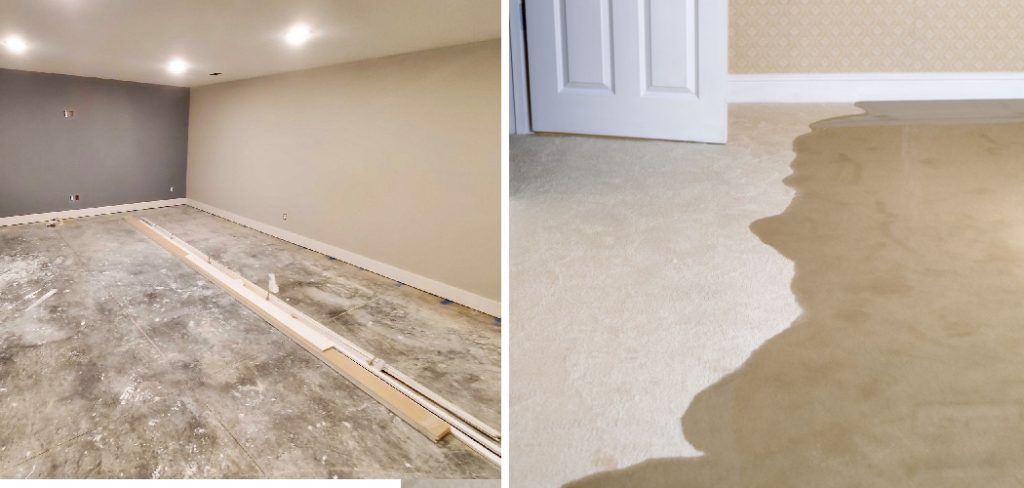
Can You Clean the Basement Concrete Floor After the Flood?
When a flood hits your basement, it can be a daunting task to clean up the aftermath. The last thing you want is a musty, moldy odor from your concrete floors. Luckily, you can clean the basement concrete floor after a flood. First, remove any debris or standing water on the surface.
Next, scrub the floor with warm water and detergent, using a stiff-bristled brush to remove any dirt or stains. Rinse with clean water and let it dry thoroughly. To prevent mold growth, use a moisture meter to ensure the concrete is completely dry. With a little elbow grease and patience, your basement concrete floor can look and smell as good as new!
Why Should You Clean Basement Concrete Floor After Flood?
When a flood hits, your basement is often the area most affected. Water seeps through the walls and floors, leaving an overwhelming mess. But after the water recedes, the real work begins. You must clean your basement concrete floor thoroughly after a flood. This is because water can seep deep into the pores of the concrete, allowing mold and mildew to thrive.
If left uncleaned, mold and mildew can cause serious health problems, especially for those with allergies or respiratory issues. Additionally, a damp floor can also weaken the foundation of your home. So, while cleaning the concrete floor of your basement might seem daunting, it’s crucial for the safety and well-being of both you and your home.
7 Steps to Follow on How to Clean Basement Concrete Floor After Flood
Step 1: Remove the Water
The first thing you need to do is remove the water from your basement. You can use a wet vacuum or sump pump to eliminate the excess water. Ensure you wear protective gear like rubber gloves, boots, goggles, and a face mask to avoid hazardous exposure to bacteria or chemical contaminants. Make sure to dispose of the water properly and not in a drain or sewerage system, as it can cause pollution and blockages.
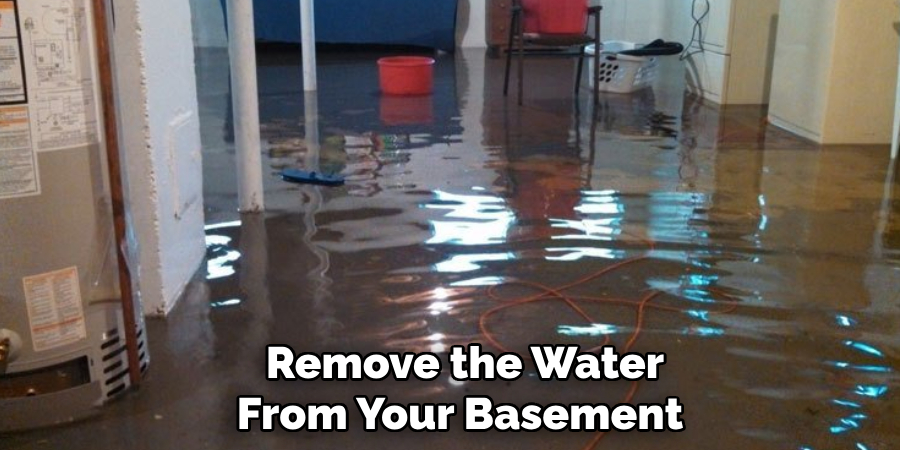
Step 2: Dry the Area
After removing the excess water, use large fans or a dehumidifier to dry the affected area. The moisture can compromise your basement’s foundation and cause molds and mildew to grow. Ensure you open windows or use ventilation to speed up the drying process. Use a moisture meter to ensure that the area is completely dry before proceeding with the cleaning process.
Step 3: Scrub the Floor
The next step is to scrub the floor using a mild detergent and warm water. Sweep up any debris, dirt, or mud that may have been left after the flood. Use a stiff, bristled brush or a power washer to remove stains or mold. Avoid using any harsh chemicals, as they can cause further damage to the concrete. Moreover, ensure you rinse the area thoroughly to avoid any slippery residue.
Step 4: Disinfect the Area
Disinfecting the area is essential to eliminate any bacteria or mold that may have grown on your basement floor. You can use a bleach solution or any other disinfectant recommended for floods and water damage. You can mix one cup of bleach with a gallon of water and use a mop or sprayer to apply it to the affected area. Allow it to sit for 10-15 minutes before rinsing it off. If your floor has tiles, pay extra attention to the grout lines, as bacteria and mold tend to grow there.
Step 5: Prevent Future Flooding
After cleaning your basement concrete floor, it’s essential to prevent future flooding. You can install a sump pump or a waterproofing system to prevent water from entering your basement. Ensure your gutter and downspouts are working correctly, and direct them away from your home’s foundation. Moreover, ensure that your drainage systems are clear and functioning correctly to avoid flooding.
Step 6: Repair the Damaged Concrete
If your floor has sustained any damage, it must be repaired immediately. Cracking or crumbling concrete can weaken the structural integrity of your home, so ensure that you call a professional for repairs. You should also check for any electrical wiring damage and repair it if necessary.
Step 7: Apply a Sealant
The last step is to apply a sealant to protect your basement concrete floor from moisture and further damage. You can choose from a variety of sealants, including epoxy or water-based acrylic. Read the instructions carefully before applying, and ensure that you use protective gear, as some sealants may produce toxic fumes. Allow the sealant to dry completely before moving furniture or equipment into your basement.
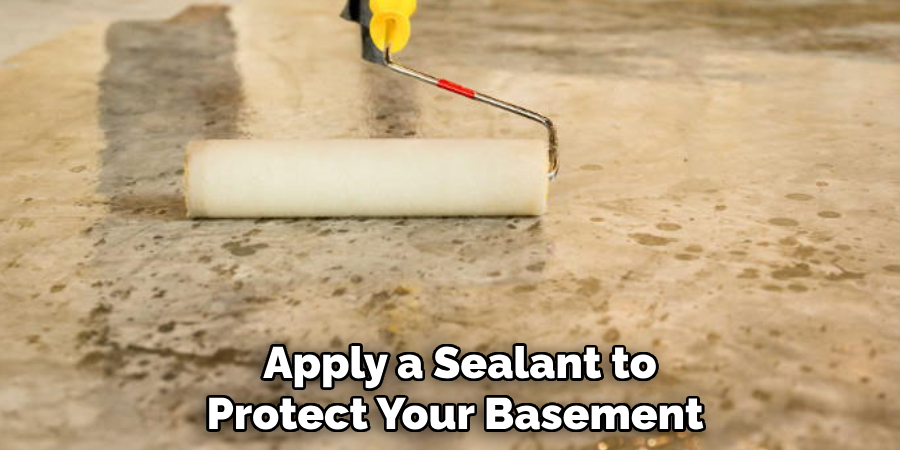
By following these steps, you can ensure that your basement concrete floor is clean and safe after a flooding incident. You can keep your basement in top shape for years with proper maintenance and care. Make sure to call a professional if you are unsure of how to proceed with any of the steps.
A professional can help you assess the damage and ensure your basement is properly repaired and sealed. Taking these precautions allows you to enjoy a safe and comfortable living space in no time!
5 Considerations Things When You Need to Clean Basement Concrete Floor After Flood
1. Remove Standing Water
The first step in cleaning a flooded basement concrete floor is to remove any standing water that may be present. This can be done with a wet-dry vacuum, mop, or squeegee. Removing as much water as possible is important to prevent further damage and mold growth. Once the standing water has been removed, it is important to thoroughly dry the area using fans and dehumidifiers.
2. Clean and Sanitize
Once all of the standing water has been removed, it is time to clean and sanitize the concrete floor. Start by scrubbing the surface with a mild detergent and warm water. Be sure to use an abrasive brush or sponge for tougher stains. After scrubbing, rinse the area with clean water and allow it to air dry completely before proceeding to the next step.
3. Remove Debris
After cleaning and sanitizing the concrete floor, it is important to remove any debris that may have been left behind from the floodwaters, such as mud, silt, or other materials. This can be done with a broom or shop vac, depending on how much debris there is in the area.
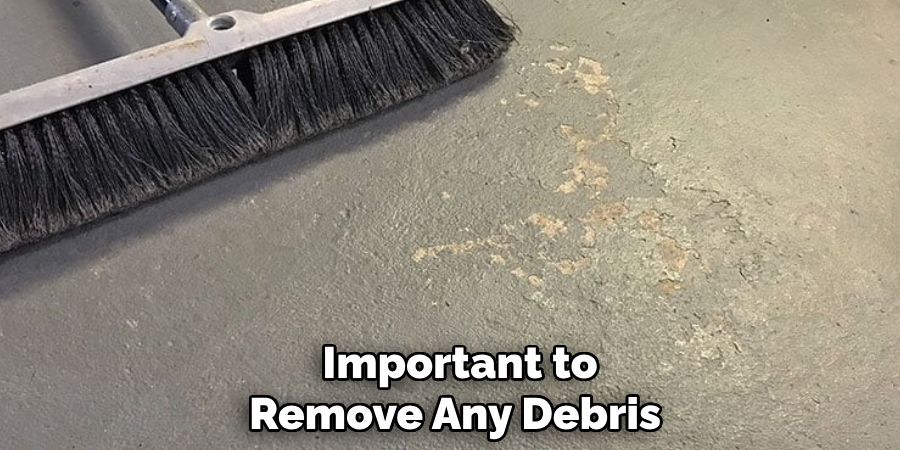
4. Apply Sealant
Once all of the debris has been removed from the concrete floor, it is time to apply a sealant to protect it from future damage caused by flooding or moisture buildup in your basement. There are several types of sealants available on the market, so make sure you choose one that is specifically designed for use on concrete floors in basements prone to flooding.
5. Consider Professional Cleaning Services
If you are uncomfortable performing these steps yourself, you may consider hiring a professional cleaning service to help with your flooded basement concrete floor project.
These services typically have access to specialized equipment like pressure washers, which can make short work of even tough stains and grime buildup on your basement flooring surfaces. Additionally, they can provide you with advice and guidance on how best to protect your floor in the future.
Benefits of Clean Basement Concrete Floor After Flood
When a flood affects your basement, it can cause serious damage to your home and be a major headache for you and your family. However, once the water has receded and you can assess the damage, the benefits of cleaning up your basement’s concrete floor can quickly become apparent. Not only does removing the water and debris help to prevent mold and other health hazards, but it also gives you the chance to inspect the foundation and make any necessary repairs.
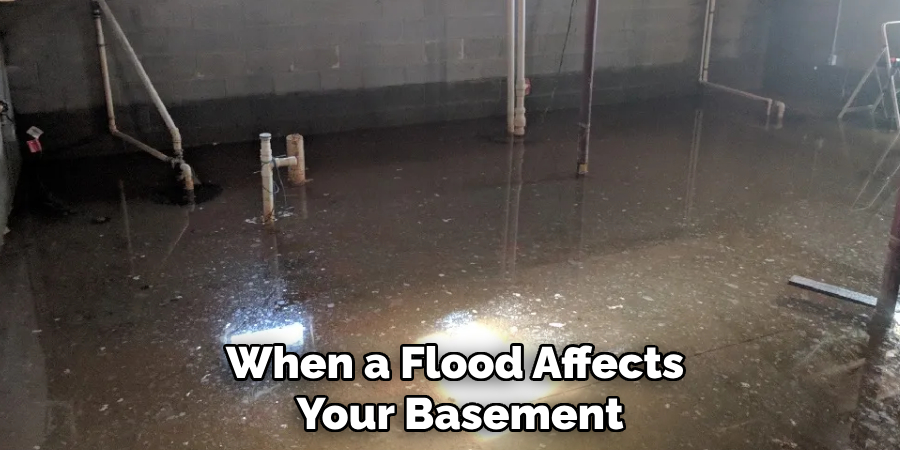
Doing so ensures a safe and structurally sound living space for you and your loved ones. Plus, a freshly cleaned and restored basement can add value to your property should you ever decide to sell. So, while dealing with a flooded basement may never be enjoyable, the result of a clean and dry concrete floor can certainly be worth it.
Conclusion
Floods in the basement can cause much damage and increase your stress levels. It’s essential to take immediate action to reduce the damage caused by floods. Following the above steps, you can efficiently clean your basement concrete floor and prevent further damage or health hazards.
Protect yourself, wear protective gear, and follow the safety guidelines. Don’t forget to prevent future floods and protect your home. Thanks for reading our post about how to clean basement concrete floor after flood.
